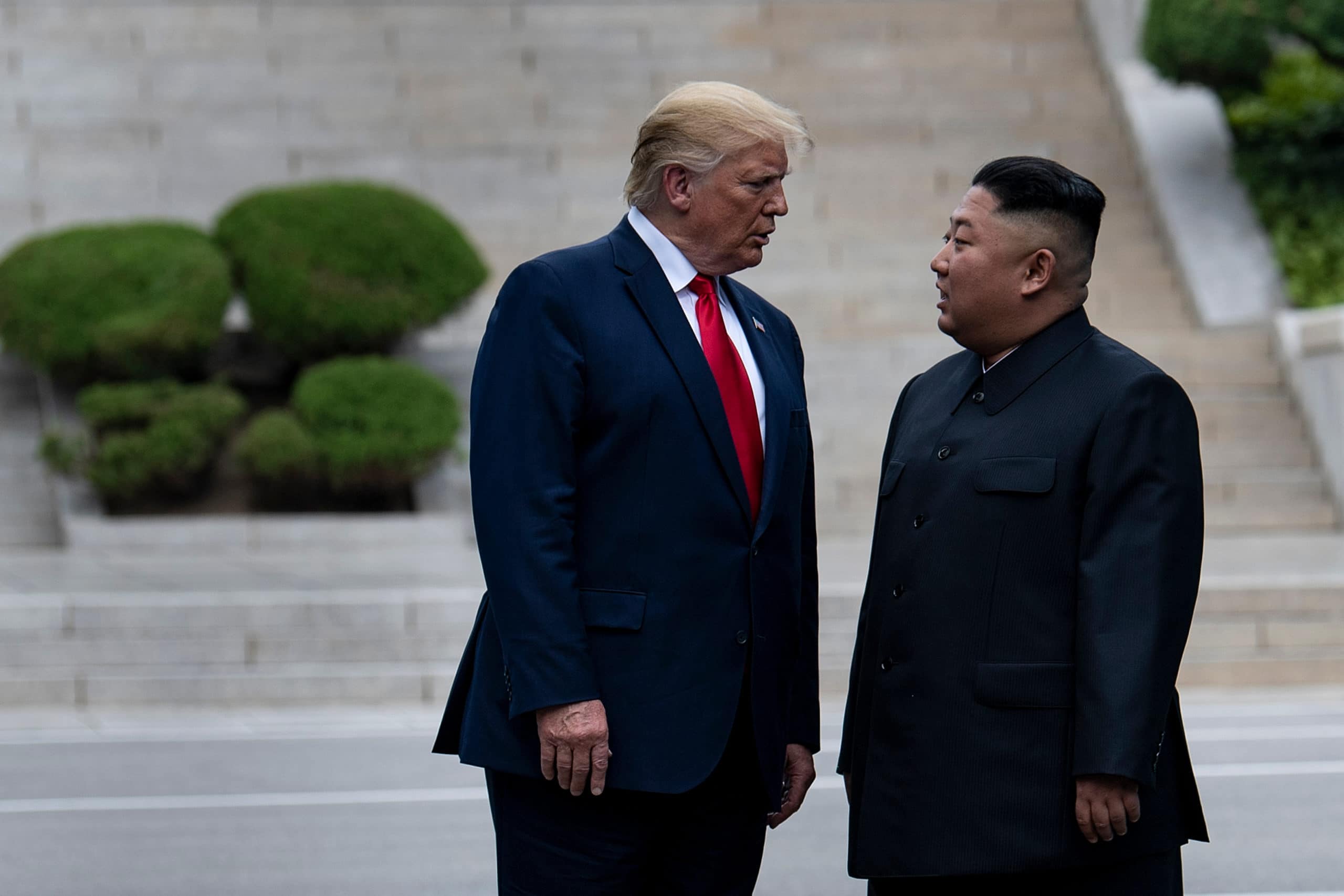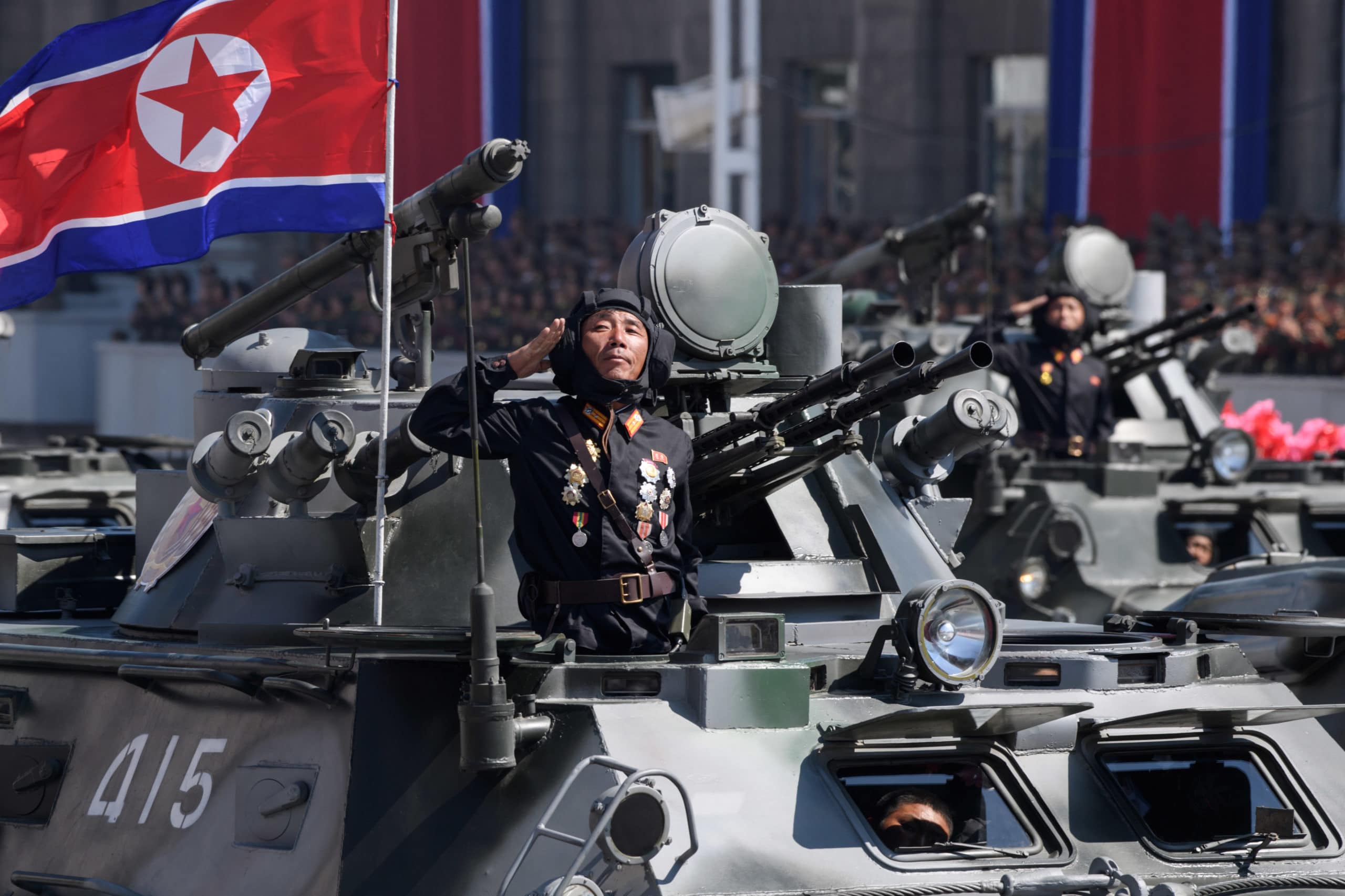January 14, 2021 | From Trump to Biden Monograph
North Korea
January 14, 2021 | From Trump to Biden Monograph
North Korea
Current Policy
On February 27, 2019, President Donald Trump and North Korean dictator Kim Jong Un met in Hanoi for their second summit. The meeting ended with Trump walking away from the negotiations because he could not accept Kim’s demands for a comprehensive lifting of U.S. economic sanctions in exchange for North Korea dismantling a single nuclear facility at Yongbyon.1 While disappointing for the United States, Hanoi was a far more significant failure for Kim, who had raised expectations in Pyongyang that he could secure sanctions relief while maintaining his nuclear and missile programs.2
North Korea has consistently sought to obtain relief from sanctions while endeavoring to maintain its nuclear deterrent.3 For instance, the North began rehabilitating the Sohae missile launch facility despite agreeing to dismantle it during the first Trump-Kim summit in Singapore in 2018.4 There was also unusual training activity at the Yongbyon facility. In April 2019, the Kim regime issued an “end of the year” deadline for the United States to yield to Pyongyang’s demands for sanctions relief as a prelude to diplomacy.5 North Korea also resumed its testing of short-range ballistic missiles and other new weapon systems as well as continued its aggressive cyber espionage and cyber theft operations.6
Nevertheless, the United States refused Kim’s demand for sanctions relief. Specifically, Congress extended North Korea sanctions that were set to expire on June 26, 2019.7

President Trump and North Korean leader Kim Jong Un stand together at the North Korean border city of Panmunjom while walking to South Korea across the Demilitarized Zone on June 30, 2019. (Photo by Brendan Smialowski/AFP via Getty Images)
Diplomatic prospects improved when Trump held a surprise meeting with Kim at the Demilitarized Zone on June 30, 2019, which made Trump the first sitting president to set foot in North Korea. The two leaders agreed to resume dialogue, which led to working-level negotiations in Stockholm in October 2019.8 The talks proved fruitless, however, after North Korea renewed its demands for comprehensive sanctions relief without offering substantive concessions.9
After Stockholm, North Korea threatened to give the United States a “Christmas gift,” a suspected euphemism for a major provocation such as a nuclear weapon or inter-continental ballistic missile (ICBM) test. This never materialized, but on January 1, 2020, Kim announced that North Korea would resume testing of long-range missiles and nuclear weapons because Pyongyang no longer felt bound by a self-imposed moratorium on testing.10
Following this announcement, North Korea’s military completed its winter training cycle at full-scale, while the United States and South Korea downsized or suspended several major exercises.11 In addition, the North ramped up tensions with South Korea by suggesting an end to the inter-Korean comprehensive military agreement and demolishing a joint liaison office at the border.12
The regime conducted a missile test in March 2020, after which a number of prolonged absences by Kim led to speculation about his poor health or even that his sister Kim Yo Jong was poised for a possible succession. At the same time, North Korea took extreme measures, such as border closures with shoot-to-kill orders against violators, internal movement restrictions, and limitations on market activity, to protect itself from COVID-19 and suppress reports of outbreaks.13
As of July 2020, the U.S. policy toward North Korea remained a demand for “complete, verifiable, irreversible denuclearization of the Korean Peninsula.”14 However, at the 75th UN General Assembly meeting in September 2020, while South Korean President Moon Jae-in reissued calls for ending the Korean conflict,15 Trump – for the first time in three years – omitted North Korea from his speech.16
Assessment
The failed summit in Hanoi explicitly confirmed that the United States and North Korea disagree about the definition of denuclearization. Whereas the United States expects the North to negotiate a swift dismantlement of its weapons programs, Pyongyang wants immediate concessions while postponing disarmament indefinitely.
Though Trump hoped to reach an agreement with Kim, the president did not surrender to Kim’s one-sided demands in Hanoi. While this deserves praise, the administration allowed its diplomatic leverage to dissipate by neglecting the maximum pressure campaign that preceded the summits.
Sanctions enforcement continued to weaken. A report by a UN panel of experts found that Pyongyang’s hackers stole hundreds of millions of dollars by hacking banks and cryptocurrency exchanges. The panel also exposed North Korea’s other sanctions-evasion schemes, including illicit banking, overseas exports of labor, and trade in sanctioned goods such as luxury products, coal, and oil. In some cases, China and Russia are actively assisting the regime.17
Military readiness also declined as the Republic of Korea (ROK)-U.S. alliance downgraded or even suspended joint training events. Meanwhile, the North Korean military went forward with training at near-full capacity.18
There was also increased uncertainty over the future of U.S. forces in Korea due to unresolved Special Measures Agreement (cost sharing) negotiations. In 2020, Trump directed the Department of Defense to provide options for troop reductions in South Korea, which would undeniably be welcomed by the North.19 Wary of such concessions, Congress barred the reduction of U.S. forces unless the secretary of defense can certify it will not harm U.S. or its allies’ security.20

Korean People’s Army soldiers stand atop armored vehicles during a military parade on Kim Il-Sung square in Pyongyang, North Korea, on September 9, 2018. (Photo by Ed Jones/AFP via Getty Images)
A clear indicator that the United States has eased the pressure on Pyongyang is that Kim continues to conduct provocations after Hanoi. Kim’s persistent intransigence underscores that his regime continues to pursue a “long con” diplomatic strategy that employs sweeping but hollow promises to secure concessions and prolong dialogue while giving up little to nothing in return.21
The Trump administration remained content with the status quo because Kim kept his personal promise to Trump of no further nuclear weapons or ICBM tests. However, North Korea is developing new military capabilities, such as solid-fuel short-range missiles and rocket launchers that could target key U.S. and South Korean bases on the peninsula.
At a military parade last October, Pyongyang appeared to introduce two new, untested missile systems: the Hwasong-16 ICBM and the Pukguksong-4, a submarine-launched ballistic missile.22 In addition, the regime displayed a wide variety of advanced conventional weapons showing marked improvement.23 The UN panel of experts also found that the regime continues to produce fissile material for nuclear weapons development.24
Despite all of this, North Korea is struggling with the fallout from COVID-19 along with monsoon rains and three typhoons. The regime denies a COVID-19 outbreak, yet it instituted severe population and resource control measures, including border closures and a halt in trade with China. These measures have debilitated North Korea’s economy even more than sanctions.25 Meanwhile, the typhoons have devastated agriculture, risking a food crisis as bad as the 1994–1996 famine, which may have claimed 3 million lives.26
Recommendations
By ramping up diplomacy and pressure, the Biden administration may be able to strengthen ties with Seoul and force Kim to accept denuclearization. This appears to be President-elect Biden’s goal. In October 2020, he wrote:
As President, I’ll stand with South Korea, strengthening our alliance to safeguard peace in East Asia and beyond, rather than extorting Seoul with reckless threats to remove our troops. I’ll engage in principled diplomacy and keep pressing toward a denuclearized North Korea and a unified Korean Peninsula.27
The following recommendations can assist that vision:
- Develop an alliance strategy for the Korean Peninsula. Through the existing State Department-Ministry of Foreign Affairs strategy working group,28 Washington and Seoul should reassess strategic assumptions about the nature of the Kim family regime and acknowledge Kim’s determination to dominate the Korean Peninsula. The two countries should maintain a long-term focus on solving the “Korea question.” This should include unification, deterrence, defense, and denuclearization.29
- Impose a “maximum pressure 2.0” campaign integrating all instruments of U.S. and allied power. Such a campaign should include five lines of effort: diplomacy, sanctions, military readiness, information and influence activities, and cyber. Kim must see that possession of nuclear weapons jeopardizes his regime’s survival. Absent such pressure, North Korea will continue to exploit diplomacy to extort concessions while paying only lip service to denuclearization.30
- Make human rights a priority. This is both a moral and national security imperative. Kim oppresses his people to remain in power. Seoul and Washington must address human rights in negotiations with the North, support nonprofits working on human rights, and focus on human rights as part of an information and influence campaign.
- Despite past failures, continue efforts to establish a substantive working-level dialogue between the United States and North Korea. This dialogue should prioritize North Korea’s nuclear, biological, and chemical weapons and ballistic missiles. It should also work to establish a comprehensive roadmap toward North Korea’s verifiable nuclear dismantlement, including how that is defined.31 Without a working-level consensus, meaningful progress toward denuclearization is unlikely.
- Encourage Chinese and Russian support for denuclearization while holding them accountable for ongoing violations of UN sanctions they claim to support. The Biden administration should publicize this duplicity and blacklist entities identified as violating sanctions.
- Strengthen allied military posture. The Biden administration should encourage South Korea to invest in additional military capacity and capability. In full coordination with Seoul, the United States should deploy to South Korea additional combat power consisting of strike capabilities. The incoming administration should also consider increased missile defense and intelligence, surveillance, and reconnaissance assets. To ensure military readiness, ROK/U.S. Combined Forces Command should hold multiple theater-level command post computer-simulated exercises to coordinate joint and combined warfighting elements and increase field training exercises for subordinate components.
- Stabilize the Special Measures Agreement (cost sharing) process. The outgoing administration made unrealistic and exorbitant demands. The United States and South Korea should quickly conclude negotiations by focusing on how both nations should support Combined Forces Command. The alliance should return to five-year cost sharing agreements instead of annual ones.32
- Coordinate a comprehensive strategy for North Korean cyberattacks. The United States should adopt a “layered cyber deterrence” approach, as recommended by the Cyberspace Solarium Commission’s 2020 report.33 This will require both cyber and non-cyber policy options, such as sanctions and diplomatic coordination with allies in support of norms and principles for cyberspace.
